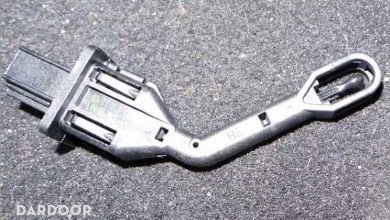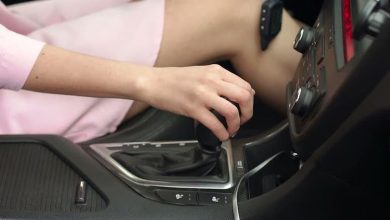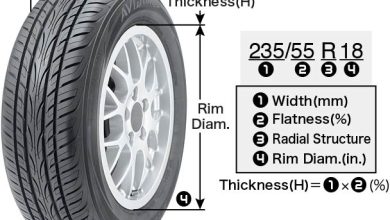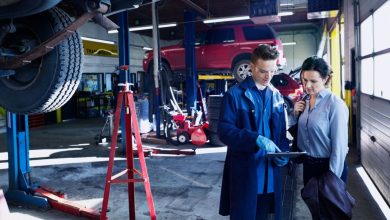Range Rover L405 Common Problems and Solutions

What common problems does a Range Rover (L405) usually has? In this article, we have summarized the most important items you should watch for when you want to buy a Range Rover L405. In the rest of this article, we will examine every single trouble in detail. Also, we will advise you on how to recognize it, fix it and how much it costs to fix it. Interested? keep Reading!
Common problems of a Range Rover L405 contain a shutting down hybrid version (2013-2015), a lagging transmission because of faulty adaptive software, clunking noises indicating the transfer case needs new fluid or the front control arm, bushings, and sway bar are worn, and unanticipated lowering of the suspension system.
The Center Console Sliding Cover Won’t Stay Open or Closed
The sliding cover on my 2016 L405 centre console cover is sticking, is this a common problem, and is there a fix around.
Faked Vents
The Range Rover exterior doesn’t have any significant issues, only some minor ones. One minor issue worth mentioning is the phony vents that have been used. Which might be okay for some and not for others—it’s one of those things. Is there anything you can do about it? Well, likely not. You have to live with it.
The Hybrid Variant Shuts Off Unexpectedly
It is a well-known common issue that would occur if the Range Rover (mainly 2013 – 2015 hybrid versions) stays driving on electric mode only, putting all the load on the starter motor, resulting in complete collapse. A way to bypass this issue is to use the stop-start option. It will take all that load off the starter, and you should be ok.
A new aftermarket alternator can cost you around $1200-$1500, which you can replace yourself if you are the DIY type and save yourself about $350–$400. The OEM ones will cost you $2300+$3000 on replacement.
Transmission Feels Lagging, And The Throttle Response Has Decreased A Lot
It is common to experience slow throttle. It could happen due to several reasons. However, an easy reset can solve the issue in most cases.
Your Range Rover has an adaptive learning mechanism that learns how you give input and calculates how it should respond. But sometimes, dealerships would mention the risk factor or do a simple reset—the transmission can cause issues, given that you have accumulated 100k+ miles; as the system learns to adapt with the expected wear and tear, the reset could cause issues.
However, it has been seen that the reset does solve the problem. You might initially experience some adjustment troubles; it will return to normal after 7 days. The throttle response overall will be much better.
It is also recommended to replace the transmission fluid while at it. Replacing the transfer case and differential fluid can also be one of the preventative maintenance measures to keep it well-lubricated so it does not cause any difficulties down the road.
To Perform The Range Rover Reset, Follow These Simple Steps Below.
- Press the start button one, do not turn on the engine,
- Hold down the accelerator for 15 seconds,
- Press the start button again to cut the power off,
- Release the accelerator,
- Wait for about two minutes,
- Start the engine and drive.
Getting the turbo to spool up is worth noting. If you are driving with a feather foot, you might always have your turbo at rest. Be a little more fun when driving, and give it a go every once in a while—It will keep things running. Inspect the oil pressure as well, just in case.
knocking Noises Coming From The Rear When Accelerating Or/And Making A Turn
These noises can be due to many different causes. A poor transfer case fluid is the most expected, which requires replacement every 80k miles. You need to replace it twice, as all the old fluid needs to be drained thoroughly. This replacement will likely make these noises fade away. And you can finally have a smooth shutterless ride.
However, if the problem stays, you can check the front control arm, bushings, and sway bar for any wear and tear—these need to be changed every 30k–40k miles costing $2200-$3000, although the clunk they made is different compared to the clicking that you hear due to the transfer case fluid problem.
To distinguish between these noises, if you hear it at low speed when smoothly accelerating and not when you floor it, change and flush the transfer case fluid, have a new one, and call it a day. You can take the suspension components replacement route if the noises are heard while going over bumps.
Road Grip Is Not That Great
This issue is more evident in the base grade models, while the performance models with V8 with their stiff suspension will be a little less prone to this boat-like maneuverability on highway speeds.
You can tackle this issue up to an extent by using the dynamic model. Nevertheless, there might be other issues that cause this problem. The first is to check the air suspension. Notice if the Range Rover loses height after it has been parked for a bit.
Leaks in the air suspension or a problem with the air pump can disrupt the driving experience. The air suspension on the Rover is expected to last somewhere around 50k miles, so if it has crossed that number, it could mean that your suspension components would need replacement.
I have mentioned the common suspension issues in the suspension section.
Other expected things to check:
- Alignment
- Tire pressure
- Wheel balancing
- Tire tread
Tires with a lower profile can also cause strange suspension behaviour when driving over bumps at highway speed. It is also recommended to update the software; it sometimes solves electronics-related cases.
A rare instance that causes this problem to an alarming extent is the loose connection of the chassis with the body. Ensure that you have it checked; the groove that connects the frame to the chassis might be loose.
Having more power than a sedan car is common in SUVs, so a bit of force is not to worry about; if the power or wobble feels alarmingly high, check all the components mentioned here.
The Air Suspension
It is one of the most worrying issues for Range Rover owners. The air suspension is said to go out around 60k miles. So if you are looking at a Range Rover with more than 60k miles, you should ask whether or not it has been replaced. If it hasn’t, you might have to spend it out of your wallet.
My Ranger Rover Loses Height
If your Ranger Rover loses height, it might be the front solenoid valve block, a leaky strut or it could be both. To inspect it correctly, you should remove the grill under the wipers. Under the hood hinge on the passenger side, spray the lines with soapy water to look for any leaks.
If (God Forbid!) the strut is leaky, that would be an expensive fix, costing $1500-$2000. Repairing the problem can be possible, but unfortunately, the problem will probably come back; it’s better to go for a new one.
You can remove the line from the reservoir to see if it maintains and holds air. You will notice one in and two out on each strut. Carefully open the line from the reservoir to prevent blowing out the fitting. If there is a backflow in the supply line, your solenoid valve block is the one at fault. Now, this is a reasonably inexpensive fix.
The solenoid valve block costs about $70 in the aftermarket. Yet, I would advise you to go for the OEM one. Yes, it would cost more, but you won’t have future problems like power supply issues.
It is not a hard job to replace it. If you are the DIY type, you can easily reach the solenoid by removing the passenger side wheel and wheel well covers and reaching to it. Make sure to have extra fasteners if you break some while removing the cover.
What is going on with the O2 Sensors (You Might Get A P2774-00 Code)
This is one of the instances where the O2 sensor code will be given by a scanner tool. However, if the issue is not directly related to the O2 sensor fault, it might be a lean situation (the engine is running on less fuel than needed) caused by another issue.
There are a couple of items that you should check.
- Check if the PCV system and the exhaust system have any leaks
- Check the fuel injectors; if they are blocked, clean them
- Check the throttle body if it needs cleaning
For starters, you might also get the idea of adding fuel injector cleaner to your fuel tank, which is a horrible idea. It would be best never to put something in the fuel tank that the manufacturer disapproves of. Most vehicle manufacturers DO NOT allow additives as these are well-known to damage the fuel system and can potentially cause damage to the engine components.
The only thing you should worry about is the grade of the fuel you are using. Premium 91 Octane (R+M)/2 is recommended, so always drive with premium petrol. However, if you don’t find a premium gas, you can use the lower grade, but only for a short time.
The APP Connectivity Problem
It’s a common issue to see with the automatic parking feature. Your Rover will do this trick only if the app can connect to the vehicle, which is often very annoying. It only connects 50% of the time, and there is nothing you can do to solve it—This issue lives, and you would have to live with it.
Range Rover Acting Funky Showing All Dashboard Lights
It is a concern that is seen quite some times, which happens due to electrical wiring problems—which is a consequence of another problem.
It all starts with water drainage that runs behind the fenders, gets blocked, and then the water makes its way inside the cabin, potentially causing a short circuit in the wiring as rust starts forming on the ground studs. (which is the most common well-known reason)
Your dealership might quote you thousands of dollars for replacing a set of spare parts. Make sure they have checked the whole wiring for any current leak, voltage drop or abnormal reading instead of just replacing the entire thing. Let them check the area behind the front fenders that may have encountered water in case of blocked pipes.
Replace the corroded connectors, and your problem will most likely be solved. We have mentioned that in detail in the exterior section for the drainage pipe issue.
Bye Bye Alternator
The alternator goes to Eden, causing the whole system to shut down after about 30-40 minutes, and the battery gets completely depleted. You will notice a message of the charging system fault immediately followed by a battery check light, after that the system will go crazy, and then shut down.
The alternator has a red line of 110k miles. So if the Range Rover you are looking at has crossed this mark (or is close to this mark), this problem is understood. If your Range Rover is about 50k-70k miles, it might just be a bad ground connector corroded due to water damage.
These imperfect alternator signs are similar to when you have a ground connector issue, which I have gone into in detail in the earlier section.
The alternator would require replacement once it has gone bye-bye. The dealership quoted $3000+ for the OEM replacement. You can replace it yourself if you are a wrenching type. You will find video tutorials on how to do so as well. It would quickly become a Halloween night if you are not the DIY type and do not have prior mechanical experience.
The DIY expense, however, is only about $500. So if you want to save money, you can replace it DIY. I would recommend the OEM ones as the aftermarket won’t be reliable.








